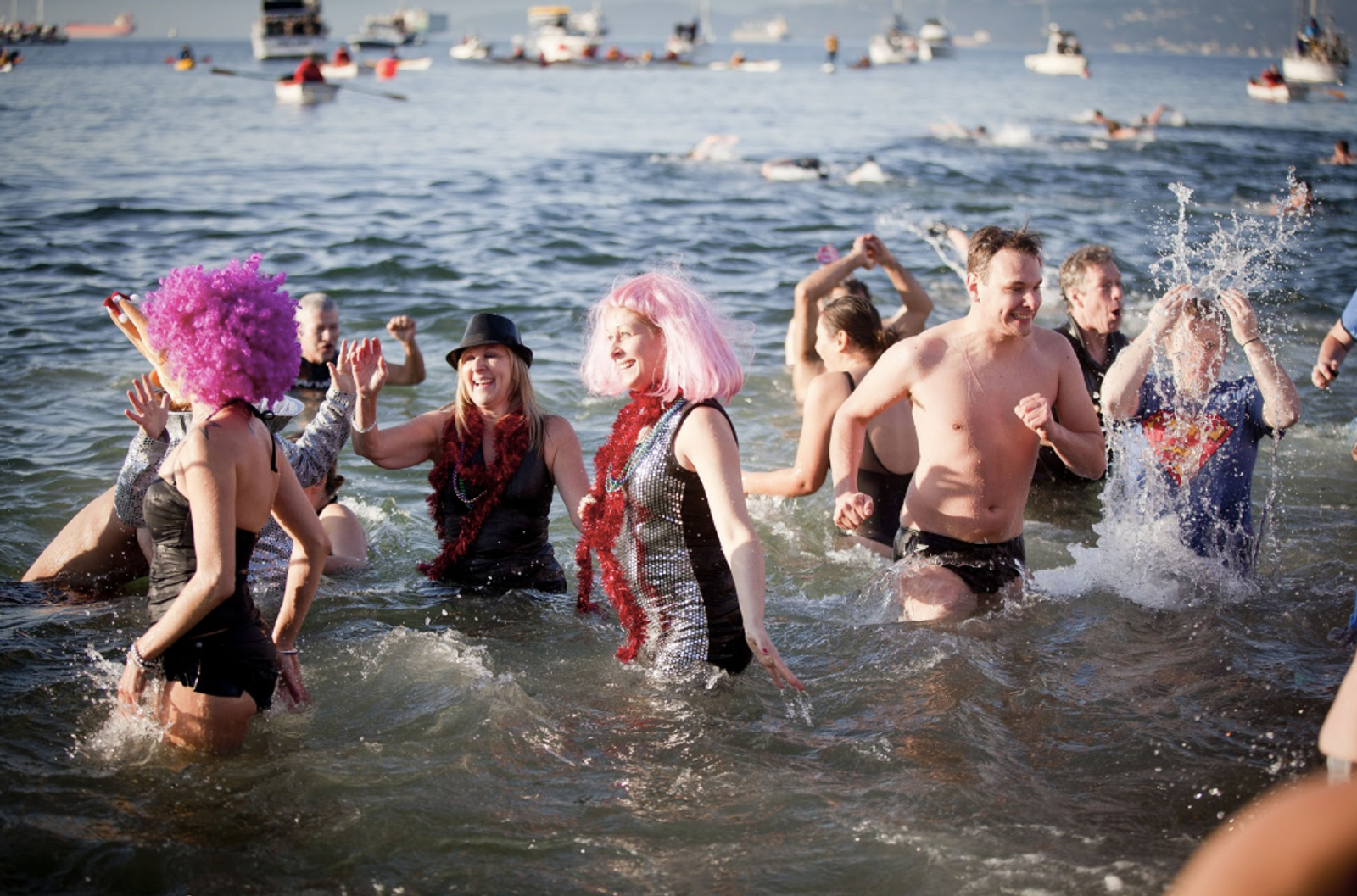Published December 28, 2018
The countdown is on. How will you be starting off the New Year? Will you be running around the block with your suitcase? Trying to stuff in seven meals? Savouring twelve grapes as the clock strikes midnight or smashing dishes on your relatives’ doorsteps? Or will you ring in the brand new year with a polar bear dip into wintry waters?
Whether you relish January 1’s icy swim events or whether you simply lost a bet at a New Year’s Eve party here are a few tips to keep you safe during this invigorating annual tradition.

Prepare yourself
Don’t underestimate the polar bear dip. You need to be prepared mentally and physically for the cold water shock. Polar Bear plunges take place in freezing winter waters (literally, the water is near or at the freezing point of 0°C / 32°F). Jumping into water of this temperature puts a lot of stress on the body. Air temperatures can be much, much lower, especially when you factor in wind chill.
Who should stay warm and dry?
Always consult your physician prior to engaging in a polar bear dip. Those most at risk from the cold plunge are people with heart conditions. Children are particularly prone to hypothermia. Pregnant women should also refrain from participating in the freezing swim.
Don’t swim if you have been drinking
Alcohol impairs your body’s abilities to constrict blood vessels, which your body needs to do in order to protect your vital organs from the icy water. Basically, if you’ve been drinking your body gets colder faster and has a harder time warming up.
Alcohol also hampers your judgement and your motor skills, two fundamental things you should always have with you when swimming.
Join an organized event
Never plunge alone. Polar Bear swims are hosted in communities across Canada and the US. The safest way to enjoy a Polar Bear Swim is to participate in an organized event. Medical aid, warm drinks, warming stations, and great music as just a few on-site benefits of joining an official swim.

Know the quality of the water
The winter can be particularly harsh on our waterways. Runoff from melting snow and winter storm events can increase the level of contaminants washing in the watershed. Protect your health by knowing the quality of the water where you are polar bear dipping. Check out the Swim Guide to see the historical water quality status for your swim site. We also have helpful graphs for each of our beaches that let you see the water quality records before you plunge.
Links
For more about the dos and don’ts of Polar Bear dipping read these useful articles:
Have fun and Happy New Year!
